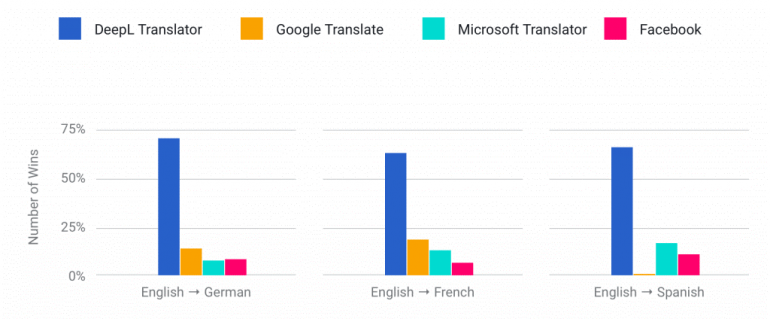
It would be difficult to find a person who has not heard of Google Translate. With its broad language coverage, Google Translate helps millions of people around the globe to understand languages that they do not speak and communicate in them. But it seems like a new machine translation service has emerged that might strip Google Translate of its dominance.
A newcomer in the machine translation landscape
DeepL is an online machine translation portal that uses deep learning. It was born out of Linguee, an extensive online dictionary established in 2009 with an impressive reliability record. This gives DeepL an undeniable advantage. The fact that it has access to the high-quality bilingual translation data from Linguee maximizes its potential for returning high quality translations.
Although the language coverage of Google Translate is much broader, DeepL is believed to offer an unparalleled quality when it comes to free and publicly available machine translation systems. That is not so say that DeepL can handle all types of content with perfection; as with any machine translated content, if the target copy is to be published for public consumption, it is advisable to have the raw MT output post-edited by a trained linguist.
There are statistics available online regarding the quality of translations produced by DeepL from English into German, French and Spanish but as a Polish native speaker, I was curious to see how DeepL performs in Polish. With Polish not being an easy language with its varied declension and conjugation patters, I had a feeling it would present a challenge to DeepL.

Source: DeepL
Generally speaking, the languages that are closer together in terms of structure and vocabulary, return better results when it comes to machine translation. For instance, raw MT from English into French will almost certainly be of better quality than MT from English into Japanese if the engines in both language directions are trained on the same amount of data.
Another factor determining how good the results might be is the availability of the training data. For example, there is an extensive amount of bilingual resources, both publicly available and privately held by companies, in English into German as this is one of the most commonly ordered language combinations that language service providers in Europe handle for their clients.
Therefore there is an abundant amount of data that can serve as training material during the creation of English into German machine translation engines.
On the other hand, English into Telugu is a less popular language combination, where there is much less bilingual resource available. As a result, machine translation engines in this language combination are trained on less data and therefore are more likely to return results of lower quality.
DeepL for Polish language
The proximity between English and Polish is not considerable and there are fewer bilingual resources available in this language combination. Therefore, my hopes were not very high.
I started with quite short, basic sentences that I use in everyday conversation such as “That is a nice spot,” “I’m on my way to work,” or “I’m not feeling very well.” To my astonishment, DeepL returned perfect translations in Polish using the wording that I would normally use as a Polish native.
I then decided to go one step further and play around with longer and more complex texts. I translated excerpts from online news articles, parts of work email correspondence and some literary content.
This time it was more hit and miss. In some instances, DeepL did very well and returned fully understandable text in Polish with some minor accuracy issues that could be easily solved with some light editing. However, it still struggled with metaphors and stumbled a few times on ambiguous words that a human would have no problems understanding given the context. In that sense, literary content seemed to pose the biggest challenge for DeepL.
Takeaway for the language industry
Although DeepL has shown some impressive performance results and can certainly aid communication in languages that otherwise would not be understandable by its users, there are certain scenarios in which the MT system stumbles.
Nonetheless, it can be of great help to linguists looking for an extra productivity boost.
With more and more content being created every day, there are also more translations to be processed. To keep up with the demand within reasonable time frames, language service providers and linguists are more likely to use such tools for machine translation in order to accurately respond to the growing need for translations.
If you have used DeepL and would like to share your impressions with us, you can do so by filling out a short survey.









